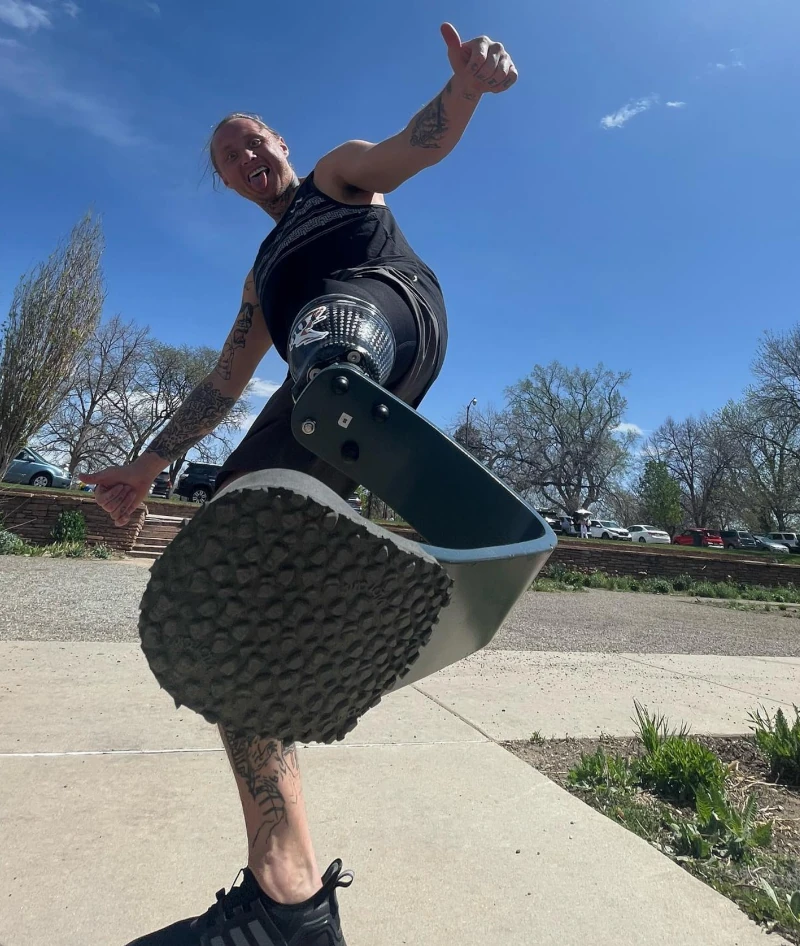If the Range of Motion Project went into a lab to design the perfect mountaineer for their Climbing for ROMP initiative, they would probably come up with Steve Crawford.
A below-knee amputee since April 2020, Crawford’s the type of person who can roll out of bed, dab on some sunscreen, and leap full-throttle into whatever challenge you throw at him. He embraces steep slopes, high elevations, and painful exertion with relish. He’s incandescently cheerful, full of life’s-too-short mojo that tends to rub off on the people around him. He’s grateful for all good fortune that comes his way, and eager to share it with others.
All of this makes Crawford an ideal fit for the 2023 Climbing for ROMP campaign, which will raise about $150,000 to help amputees who lack access to prosthetic care. He’ll be part of the team that travels to Ecuador in late September to tackle the 18,996-foot summit of Cayambe. And he’ll be cheering on all the volunteers who participate in ROMP’s Community Climb, ascending their own mountains throughout September all over the United States and the world (here’s where you can sign up).
Crawford has the type of spirit that can make any challenge seem more attainable. When you’re out on the hiking trail, tired, hurting, gasping for breath, and questioning why in heaven’s name you agreed to drag yourself to the top of some forbidding peak, he’s the guy who will alter the vibe and deliver a jolt of mental fortitude.
“The brain is the strongest organ in the body,” says Crawford, who lost his leg due to injuries he sustained in a motorcycle crash. “After I woke up from my first surgery, I didn’t know why I was still alive. And my thought was: ‘I’m not going to waste it.’ I’ve tried to keep a positive attitude ever since.”
That wasn’t easy in the immediate aftermath of his accident. Doctors spent more than half a year attempting to salvage Crawford’s limb. After they finally decided to amputate, he spent several months in recovery and rehabilitation.
“So I was immobile for the better part of a year,” he says. “I spent that whole time getting around on crutches, in a wheelchair, or with a cane. So I definitely know what it does to your psyche when you’re not able to do the things you used to take for granted. Once you get your mobility back, it empowers you in so many ways.”
That experience is what spurred Crawford to devote so much of his time to uplifting other amputees. He has served both formally and informally as a peer mentor, problem solver, sounding board, and fundraiser for multiple organizations. Countless amputees have drawn on his strength. But Crawford insists that serving the community benefits him at least as much as the people he helps.
“I’ve gained a lot of knowledge by putting myself out there,” he says. “I’ve met all these amazing people who have knowledge that I wouldn’t have had unless I was involved in the community. There’s not a specific handbook of how to be an amputee, you know? I’m I’m able to answer a lot more questions than I would have been had I not learned so much from other amputees.”
Climbing for ROMP is a natural extension of Crawford’s philosophy. Since its inception in 2015, the fundraiser has generated nearly $700,000 to support ROMP’s mission to provide first-class prosthetic care to underserved populations.
“The whole reason I’ve I’ve been able to do the things I do is because I have access to good prosthetics, good follow-up care, and all of that,” Crawford says. “A lot of people don’t have access to that. I’m stoked to be able to give other people the ability to start their journey to mobility and live their life the way they want to and do the things they want to do.”
You can support Crawford and the rest of the Cayambe climbers by making a donation at rompglobal.org. Second, you can join one of the teams (or start your own) involved in the Community Climb. Because this is the 33rd anniversary of the ADA, ROMP is trying to organize 33 climbs and raise an aggregate $33,000.





